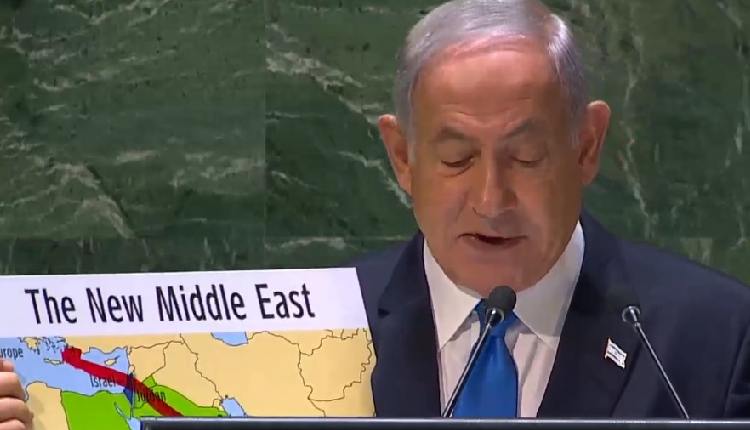
Since the beginning of the year, Uzbekistan has held several rounds of negotiations with Qatar and the United Arab Emirates on financing the construction of the $7 billion Termez-Mazar-i-Sharif-Kabul-Peshawar railway, which would link Uzbekistan to Pakistan via Afghanistan.
The project is crucial for the states of Central Asia and Afghanistan in terms of providing access to the sea, as well as strengthening their transit potential and geopolitical role, but the implementation of the Trans-Afghan Railway has long been complicated by instability in Afghanistan During the Republic period a major threat to the project was the Taliban; now the current Taliban government in Afghanistan is ready to act as a guarantor of the route’s safety. Another remaining major hurdle is the question of investment. As such, Tashkent has called on the Gulf monarchies to cooperate. Kazakhstan, Russia, and Belarus have also expressed interest.
The role of Uzbekistan in the development of trans-Afghan communications remains crucial. However, the situation might change due to increased competition with Iran and Turkmenistan, given their active interaction with the Taliban regime on transport and transit issues.
To the South Seas
Uzbekistan has pursued a constructive policy toward Afghanistan, diligently involving Kabul – regardless of who held power – in the process of strengthening connectivity between Central and South Asia.
Since 2011, the Hairatan-Mazar-i-Sharif railway line has been in operation, providing Uzbekistan with an exceptional position in the transportation of goods in the Afghan or trans-Afghan direction. This corridor serves almost the entire volume of Afghanistan’s foreign trade, generating high transit revenues. This explains Tashkent’s ardent desire to use it in new transport projects.
In November 2023, a memorandum was signed on the creation and implementation of the International Transport Corridor (ITC) Belarus-Russia-Kazakhstan-Uzbekistan-Afghanistan-Pakistan. The length of the route is 5,532 kilometers, and the cargo delivery time is 20 days, which is three times faster than transit by sea. The promise of economic benefits fuels the interest of northern powers in using the Uzbek-Afghan transit route to export goods to South Asia and the Middle East.
Moscow has many alternative options in its arsenal, including routes along the Caspian Sea (trans-Caspian), the territory of Azerbaijan (western), as well as Kazakhstan, Uzbekistan, and Turkmenistan (eastern), sometimes bypassing Uzbekistan. These are all variations of the International North-South Transport Corridor (INSTC) with access to Iranian ports and roads.
The Trans-Afghan Corridor will not only complement this existing combination, but will also serve as an excellent replacement for the waterway through the Black, Mediterranean, and Red Seas, which, in light of the war in Ukraine and the growing Palestinian-Israeli conflict, has become extremely unsafe.
Tashkent also plans to expand the China-Kyrgyzstan-Uzbekistan railway corridor (construction is expected to start soon) to Afghanistan. This will help attract additional cargo flow to the Trans-Afghan route to Peshawar.
China, which has serious potential for developing deeper trade relations with Afghanistan, will partially benefit from the connection of the two routes. However, Beijing has placed its main bets on the transport connection with its western neighbor via the China-Pakistan Economic Corridor (CPEC), which is known as the flagship and the most expensive project of the Belt and Road Initiative. In May 2023, the Taliban announced their decision to participate in CPEC, essentially recognizing Pakistan’s exclusive right to transit transportation between China and Afghanistan (via the high-mountain Karakoram Highway and the Broghil Pass on the way to the Wakhan Valley). In this regard, the role of Central Asian transit for China is not so significant, but Beijing is not going to write it off either.
Iran is not indifferent to the Trans-Afghan Railway, as it has noticeably intensified contacts with the Taliban along international transport corridors. Tehran is building the Khaf-Herat railway and intends to extend it to the Lesser Pamir (Wakhan region), where the borders of China, Pakistan, Afghanistan, and Tajikistan intersect. This will most likely be done through a connection with the Termez-Mazar-i-Sharif-Kabul-Peshawar railway, taking into account the Taliban’s previously stated plan to connect Mazar-i-Sharif and Herat by rail.
In addition, Uzbekistan, in partnership with Kazakhstan, which has port infrastructure in the Caspian Sea, can act as a convenient transit option when building logistics from the South Caucasus, as well as from Turkey and the European Union, through the South Caucasus in the Afghan-Pakistan direction and back. However, to seize this opportunity, Tashkent will have to compete with Turkmenistan, which borders Afghanistan and the Caspian Sea.
Competition for Transit
The above balance of interests of world and regional powers in the issue of transport connections with Afghanistan through the territory of Uzbekistan brings the implementation of the long-term initiative to build the Trans-Afghan Railway closer to reality. The length of the future railway will be 647 kilometers. The transportation of goods from Pakistan to Uzbekistan along this route will take only 3-5 days instead of the current 35. The cost of transporting one container is expected to decrease by almost three times. By 2030, the potential cargo flow through the new railway will be about 22 million tons per year. Its bulk will be formed through transit.
The prospect of investment by the Gulf states in the project to build a railway from Termez to Peshawar is becoming more obvious. In 2020, the Emirati company AD Ports Group and the Uzbek company Sanoat Energetika Guruhi (Saneg) created the joint venture ADL-Ulanish. It was trusted with the development of a feasibility study for the project. In the fall of 2023, a Qatari delegation visited Tashkent and got acquainted with the technical parameters of the Trans-Afghan route, after which they expressed readiness to implement it. It seems likely that these players will unite into a consortium, which will subsequently receive the right to manage the operation of the railway.
Hypothetically, the establishment of a railway connection between Tashkent and Islamabad will strengthen the competitive advantages of Uzbek transit more broadly, coupled with its geopolitical and geoeconomic significance for external actors. However, the current realities of trans-Afghan communications may cast a dark shadow on that cherished prospect. After all, the Taliban support the construction of not only the Trans-Afghan Highway, but also the Khaf-Herat railway with access to the Iranian port of Chabahar on the shores of the Gulf of Oman, and also intend to activate the Lapis Lazuli Corridor, initiated by Turkey, Azerbaijan, Turkmenistan, and Afghanistan in 2012.
The starting section of the Lapis Lazuli Route should be the railway from the Torghundi checkpoint on the Afghan-Turkmen border to the city of Herat. Its construction has already been agreed with the Turkmen side. From Herat, the route will proceed to Ashgabat, then continue to the Caspian port of Turkmenbashi with access to the port of Baku, then through Georgia to Ankara and Istanbul.
Thus, Afghanistan is in a position to diversify trade flows, simultaneously reducing transport dependence on Iran, Pakistan, and, to a certain extent, Uzbekistan. In this case, Turkmenistan will benefit the most due to its connecting role in the Lapis Lazuli combination. This is a serious challenge for Tashkent.
If the Torghundi-Herat railway line is launched, Uzbekistan risks losing its privileged status in the transportation of export-import cargo of Afghanistan and its foreign trade partners.
Such a trend has already emerged. For example, neighboring Kazakhstan, which has traditionally used Uzbek transit to enter the Afghan market, in recent years has begun to actively look at alternative routes through Turkmenistan. Most likely, Russia will follow the same example. Moscow has not hidden its plans to connect to the Lapis Lazuli Corridor through its own ports on the Caspian Sea and extend it to Pakistan. It should be noted that in 2023, the Taliban proposed the Herat-Kandahar railway project to provide connectivity between the Russian Federation and Pakistani ports in the Indian Ocean.
Conclusions
Against the backdrop of regional military conflicts affecting the security of strategic sea routes connecting East Asia and Europe, Eurasian land routes demonstrate high significance in enhancing the flow of trade between these subregions. Significant changes in the international logistics system are fueling the development of trans-Afghan communications, where Uzbekistan has secured its status as a key transit country and reliable partner of Afghanistan.
In tandem with Kabul, Tashkent is forming effective transport corridors, involving states from near and far abroad. The core of all these projects should be the Termez-Mazar-i-Sharif-Kabul-Peshawar railway, which is scheduled to be launched in 2030. China, Russia, Iran, and the Persian Gulf countries are showing varying degrees of interest in this route. Its successful implementation will bring Central Asia economic bonuses due to the diversification and intensification of foreign trade, and also a geopolitical dividend, which will be expressed in reduced dependence on northern cargo delivery routes. At the same time, Uzbekistan, as so far the only country that has direct, uninterrupted railway communication with Afghanistan, will have another fundamental opportunity – to strengthen its transit potential.
To maintain and increase competitive advantages in the southern direction, Tashkent needs to manage competition with Iran and Turkmenistan. Here it is important to work proactively – to improve tariff policy, simplify customs procedures, improve the condition of road infrastructure, improve the quality of transport services and much more. Ultimately, this will have a positive impact on the attractiveness of Uzbek transit.






